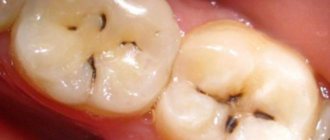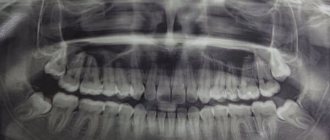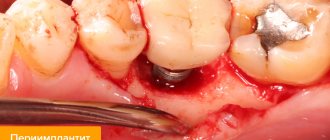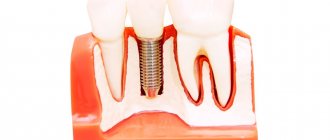Earth fish! Who is this and where are they found?
There are many living organisms living on our planet, about which we know little.
And if you are not professionally involved with the animal world, then information about some of the representatives of the living world may seem strange or implausible to you. This will happen, for example, with fish, which will be discussed later. Let's say you are a travel lover and decide to visit Africa, look at the nature of this continent, and learn something new. And then one day you wake up in your camp and see that the locals, armed with shovels and picks, are getting ready to go somewhere. Having decided to inquire, you will fall into a stupor when you learn that they are going fishing.
When the goal is achieved, she lies down comfortably and secretes a large amount of mucus to maintain moisture around her and falls asleep. But not all protoperas sleep in burrows; there is another method of hibernation, which is much less common. With this method, the fish remains on the surface and covers itself with a thin layer of mucus, which turns into a kind of cocoon.
She sleeps, depending on weather conditions, from 6 to 9 months. A record long sleep is considered
the result achieved under experimental conditions is
4 years.
After such a long sleep, the fish woke up without any harmful consequences for itself.
Such amazing nature surrounds us)
Thanks for reading. If the material was interesting and informative, like and subscribe to the channel) Leave questions and suggestions in the comments.
Source
Big eggs as a natural phenomenon
After our modest studies in the field of gravitation and cosmology, I wanted to talk about fun, lightweight things to relieve myself. A good topic was suggested by a scientific news feed: why do some male individuals have large testicles, while others have average ones?
“Big eggs” is a sacred theme in the Russian sector of the noosphere. For example, the respected Ksenia Sobchak argues with the no less respected Eduard Limonov about material inequality. And now remarks are heard: businessmen, they say, should receive more hired workers, because they have stronger balls. That is, society is ready to reward carriers of this trait with a ruble. Sometimes it even happens that they say about a girl, wanting to praise: “A woman with balls.” Although this, of course, is in a purely figurative sense, genetics is silent here.
It is curious that in other cultural areas everything can be just the opposite: society is quite capable of appreciating and fully encouraging the opposite phenotypic trait. Recent publications in Scientific American and Nature vied with each other to promote the Atlanta researchers' scientific paper submitted to PNAS. The essence of the scientific result is well conveyed by the headline in Nature: “The best fathers have smaller testicles.”
Researchers showed male subjects photographs of their children. At the same time, an MRI of their brain was performed: those who were sincerely touched by the sight of a cute baby showed increased activity in a certain lobe of the brain (ventral noradrenergic bundle). Meanwhile, in another room, their friends, mothers of toddlers, were being asked: how does daddy behave? Predictably, the ladies praised those fathers who had more touching brain activity. And finally, biometrics: all this correlates with the volume of the testicles. Q.E.D.
And, in general, there is no sensation: zoologists have long observed that the males of those primates that do not care at all about their offspring (like chimpanzees) have large testicles that produce an awful lot of semen, and so they run from female to female all day long, Well, or they fight among themselves - what kind of parenting is that? With gorillas it’s the other way around: pure paternal tenderness and no left turns. Because walking to the left is encouraged by testosterone and other male hormones, which are partly produced in these indecent places. And people, therefore, have natural variability: some grow huge reproductive appendages and behave like a macho, others devote themselves to their family and try not to get into the thick of things.
It is this very variability that puzzles biologists. It would seem that sexual behavior should be very rigidly fixed by natural selection, then why did nature allow these asexual sussies? And not only in humans: mice, for example, can generally change gender from male to female during prenatal development. This is not to mention the fact that when a pregnant female lives under stress, her baby mice have an increased chance of becoming, uh, ummm, gay - this has been known for a long time, and this, in particular, is the basis for the theory that that homosexual behavior somehow depends on overpopulation and is intended to regulate the birth rate.
My beloved colleague Tata Oleinik recently wrote a very accessible article for Maxim magazine - and the only thing more accessible than articles for this magazine is a game of leapfrog - about where homosexual behavior comes from in animals and people. This, Tata argues, is partly necessary to avoid excessive population growth.
Indeed, if all males run like crazy after females with their genitals at the ready, excessive reproduction cannot be avoided. And this is not the only problem: most likely, they will also darken the peace of their neighbors with endless fights, and problems will arise with the power vertical and with stability. One can easily understand why nature needed something to counteract the inexorable selection pressure that encourages males to endlessly become males (and homosexuality alone is clearly not enough here). But how exactly nature solves this issue is becoming clear literally now.
We are talking about a paper with a boring and long title, published in PNAS by scientists from Cleveland, Ohio (how the deck is weirdly shuffled! Claudia de Rham, whose hypothesis we discussed recently, works at the same university). The researchers, in fact, found out how the SRY gene cassette works - the same one that is located in male humans and male mice on the Y chromosome and is responsible for the development of male characteristics. If she works with all her might, male characteristics (I really don’t want to repeat the word that I used in the title again - well, I used it for advertising, that’s enough) develop without interference, to the fullest. But it turns out that this thing has a clever regulatory mechanism built into it.
The SRY gene product is synthesized in the cytoplasm, and then it needs to enter the nucleus. At the same time, the residue of phosphoric acid is hung on it. Then, apparently, the SRY protein has a little time to sit on that place on the chromosome where it will set off the entire sequence of events leading to the development of one hundred percent macho. But the phosphorylated protein is very quickly removed from the nucleus to the outside. A small shift between exports and imports is enough to upset this fragile balance that determines who the developing individual will become - a macho man or a pathetic henpecked man, forever doomed to play elephant with the kids, never having known the sweetness of adultery.
The essence of the open mechanism is that the effect balances at the level of the sensitivity threshold, and even not very strong environmental factors (intrauterine development) are able to influence the result. Which, in fact, was what Mother Nature needed to combat excessive machismo.
Dr. Michael Weiss, one of the study's authors, explains to The New York Times: "This subtle switch underlies variability in testosterone secretion, producing men with a wide range of gender styles and capabilities that contribute to community survival."
We present these scientific data not only for the amusement of readers, or to once again use the word “eggs” in the title. We really wish the community survival and other benefits. And therefore we say macho: don’t be arrogant, you are such not by your own merit, but by the permission of nature (or rather, the SRY-dependent regulatory mechanism of embryogenesis). And to the henpecked people we say: don’t despair, nature needs you, you are not losers, well, at least look at how sweet your little one is growing. And in conclusion, we say to the ladies: ladies, you see how vulnerable and sensitive we are to factors. At least don't add it.
This is the first deep-sea fish known to open its mouth
This parazen fish (Parazen pacificus) was discovered at a depth of about 500 meters near Puerto Rico by a remote-controlled submersible.
In 2015, ichthyologist Randy Singer, now at the University of Michigan Museum of Zoology in Ann Arbor, identified a fish discovered by a remotely operated underwater vehicle for the US National Oceanic and Atmospheric Administration's Okeanos Explorer. A red camera flashing red light flashed in front of a camera about 500 meters deep near Puerto Rico.
Ingredients
For the recipe you will need:
- Milk - 1 cup.
- Butter - 85 g.
- Yeast - 1 tbsp. l.
- Sugar - 1 tbsp. l.
- Salt - a pinch.
- Eggs - 1 pc.
- Flour - 2 cups.
- Sour cream - 400 g.
- Sugar - 0.5 cups.
- Eggs - 3 pieces.
- Vanilla - 10 g.
- Apples - 1 pc.
- Cinnamon - 2 teaspoons.
Dry mouth: what is the cause and how to get rid of it?
Dry mouth: what is the cause and how to get rid of it?
Every tenth patient in dental clinics complains of dry mouth. However, the causes of a lack of saliva may not only be problems in the oral cavity.
dry mouth, xerostomia, dental caries, treatment
A person usually feels dry mouth as a desire to drink water. In the case of normal thirst, the problem is solved by replenishing the lack of fluid. However, if the feeling of dry mouth bothers you with enviable regularity or is constantly present, we talk about xerostomia, or dry mouth syndrome.
If there is insufficient amount of saliva, complaints arise about:
- dryness, burning, tingling in the mouth;
- constant need to drink water or rinse your mouth;
- difficulties in chewing and swallowing food, talking;
- decreased sense of taste;
- bad breath;
- dry lips, soreness and trauma to the oral mucosa.
The consequences of long-term xerostomia are:
- disturbance of the microflora of the oral cavity as a result of a lack of lysozyme;
- the development of rapidly progressing caries, which leads to tooth loss;
- periodontal diseases;
- stomatitis;
- frequent biting of the mucous membrane while eating;
- dyspepsia.
The salivary glands secrete about 1.5–2 liters of saliva per day. Saliva consists of water, mineral salts, mucus (mucin) and lysozyme - a natural bactericidal substance, enzymes that digest carbohydrates, urea and uric acid.
How to help yourself
You can practice self-help only when the appearance of a metallic taste in your mouth is not a consequence of illness.
Many home remedies relieve the symptom temporarily, but do not address the cause itself. Recommended:
- maintaining careful oral hygiene (regular brushing of the tongue and teeth, rinsing);
- drinking enough fluids throughout the day;
- eliminating factors that cause an unpleasant taste (refusal of aluminum and cast iron cookware, drinking purified water, changing water pipes, replacing dentures with better ones).
Rinsing with water and lemon or soda solution, drinking tea with spices, drinking spiced food, or simply chewing cardamom seeds can also eliminate the taste for a while.
If the symptom does not go away for a long time , you should definitely consult a doctor.
“Quail eggs without salmonellosis” - a myth
In recent years, many have learned well that raw eggs can contain salmonella bacteria, which, by the way, cause both the notorious food poisoning and severe forms of salmonellosis with complications in humans.
In general, there is no rush to eat raw eggs. However, for some reason the restriction only affected chicken eggs. Moreover, one often comes across the opinion that the increasingly popular quail eggs do not contain salmonella at all. But this, alas, is a myth. It’s just that the prevalence of quail eggs is much less than chicken eggs, and there are even fewer people who eat them exclusively. Hence there are fewer known cases of salmonellosis. Remember one very simple thing: chickens do not become infected with salmonella on their own. By the way, they almost never get sick from it, but only transmit bacteria. Birds become infected with salmonella during the breeding and fattening process. The main source of infection is feed, which contains processed animal remains from large and small cattle and pigs. It is they who most often serve as a carrier of salmonella. Therefore, if you feed quails with the same compound feeds and keep them in not very favorable conditions, when the microclimate in the poultry house is disturbed or there is overcrowding, then salmonella will appear in the quail eggs. It should be remembered that any raw animal products can become potential sources of infection! Tags:
- Specialists
- Intestines
- Milk and dairy products
- Safety










